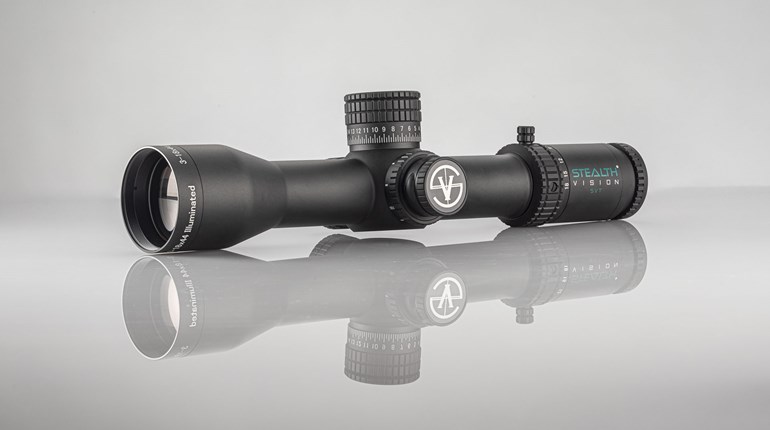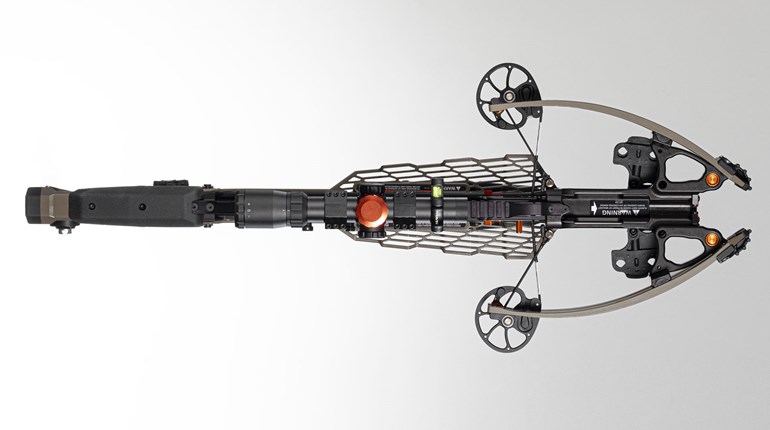
Remember as a kid when you shot an arrow high into the air and were delighted when it stuck in the ground, point first? It stuck because its metal tip made the arrow front-heavy.
While aerodynamics are more complicated than that, you should know that by manipulating your arrow’s front of center (FOC) balance, you can alter its ballistic characteristics to your advantage. In layman’s terms, FOC refers to the percentage of an arrow’s weight that is forward of its midway point.
When a bowstring is released and an arrow takes flight, energy rapidly transfers down the shaft to the tip. Once this happens, the arrow is essentially pulled through the air by the tip, rather than being pushed by the nock. This allows smooth steering of the arrow, and it also increases penetration when the arrow strikes a target.
Nearly all modern, mass-manufactured arrow shafts are uniform in weight across their lengths, so they rely on the addition of a 100-grain tip that’s heavier than the fletching to produce an FOC of 5-10 percent. For shooting with field tips that are easier to stabilize than broadheads, 5-10 percent is desirable, because a slightly lower FOC produces flatter trajectories without sacrificing stability (which leads to accuracy). But most experts agree that fixed-blade broadheads fly better with an FOC of 12-18 percent, with 15 percent ideal for most hunting setups.
So why don’t all arrows have a greater FOC built in? The main reason is that a 15 percent FOC doesn’t come without some tradeoffs. First, if weight is simply added to the tip, it results in a heavier overall arrow that is therefore slower by a few fps. Slower arrows don’t shoot as flat, and they don’t sell as well. Secondly, arrows owning a higher FOC drop at an exponentially faster rate as range increases.
However, I believe those negatives are worth the advantages of a higher FOC. For one, laser rangefinders have nearly made arrow speeds and trajectories non-issues for hunters. Secondly, accuracy generally increases. Third, more penetration can be expected. And finally, shooting heavier arrows reduces bow noise.
The reason hunters don’t go crazy with FOC is that at some point arrow drop becomes an issue. For example, the arrow trajectory that results from an FOC of 30 percent might make your sight pins have such large gaps between them that they all wouldn’t fit within the sight frame. There’s a reason why 15 percent is optimal.
While FOC can be altered by reducing an arrow’s tail weight—using a lighter nock system or vane style, or removing a wrap—the easiest way is often to increase the weight at the tip end. Install brass inserts or collars, or simply switch to a heavier broadhead like a 125-grain model. Gold Tip offers a weight system called FACT for its arrows, which allows you to fine-tune FOC. Whatever method you use, shoot groups to verify and experiment further if necessary. (Some bows might have to be re-tuned.) Just don’t assume your arrow is optimal the way you bought it.

Get the FACT System
Gold Tip offers what’s arguably the easiest way for bowhunters to tune an arrow’s FOC via Front of Arrow Center Technology (FACT). The system, which is compatible with Gold Tip arrows and some from other manufacturers, consists of 10-, 20- and 50-grain weights that screw into the rear of the company’s inserts. The weights can be added, combined or removed with a wrench that slides inside the arrow shaft from the nock end, which makes it possible to experiment with FOC at the range.
“[Adding] weight behind the insert simply puts [it] behind the broadhead to where the broadhead doesn’t have as much ability to steer the front of the arrow around,” says Tim Gillingham, professional shooter and Gold Tip pro-staff manager. “But it also creates more resistance, so the arrow will bend more in the middle before it starts to get moving. It creates a de-spining of the shaft and another set of problems that might require a stiffer shaft to be shot.”
Gillingham recommends that bowhunters start by adding 20 grains of weight via the FACT system, checking arrow flight, and then, if necessary, adding 20 grains more. “The nice thing about the FACT system is it’s reversible,” he notes. “You can put it in, see how it makes the arrow react, see how it improves your grouping, and if you don’t like it, you can take it right out.”
Build Your Skills: Calculate FOC
To check your arrow’s FOC, measure the complete arrow from field-point or broadhead tip to nock end; this is its total length (L). Divide that number by 2 to find the midpoint, and mark that spot on the arrow. Next, set the arrow on a fulcrum—a triangular piece of wood works—to find and mark its natural balance point. Then measure the distance between those two marks (D). Divide D by L, and multiply the answer by 100 for the arrow’s FOC percentage.
For example, an arrow including broadhead with an L of 30 inches has a midpoint at 15 inches. If its balance point is at 12 inches behind the tip, D is 3 inches. D/L = .1; .1x100 = 10; FOC = 10 percent.



































